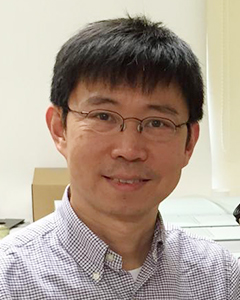
Kui LIU (Hong Kong)
Dr. Kui Liu obtained his Ph.D. from Umeå University, Sweden, in September 1999. After his postdoctoral training at Harvard Medical School, USA, he became an assistant professor in 2003 at Umeå University, Sweden. He became a full professor in 2010 at Umeå University and then moved to the University of Gothenburg, Sweden, in 2011. Since 2017 Dr. Liu has been the Scientific Director of the biotechnology company Omnio Inc. of Sweden. He has also been an adjunct professor at Shandong University, China, since 2017.
Dr. Kui Liu’s research group focuses on the molecular mechanisms underlying female germ cell development. Over the past decade, his group has made several groundbreaking discoveries and has stood out as a leading team in the field of female reproduction. At the same time, he also endeavors to translate his findings into clinical treatment.
Abstract
Mechanisms Regulating the Activation of Primordial Follicles and the Application in Treatment of Female Infertility
About 10–15% of couples of reproductive age are infertile, a large portion of which are due to female infertility. To better understand the causes of female infertility and to develop new treatments, we study the molecular mechanisms of female germ cell development. The development of female germ cells is a complex process involving cell migration, cell proliferation, meiosis, meiosis arrest, meiosis resumption, etc. My work over the past 15 years has been largely focused on the activation of primordial follicles and related physiological and pathological events.
In female mammals, the initial pool of primordial follicles serves as the source of developing follicles and oocytes for the entire reproductive lifespan of the animal. The molecular mechanisms that regulate the activation of primordial follicles have been studied primarily using the numerous genetically modified mouse models developed in my lab. Several pathways operating in both the somatic primordial-follicle granulosa cells (pfGCs) and the oocytes, such as the phosphatidylinositol 3 kinase (PI3K) and the mechanistic target of rapamycin complex 1 (mTORC1) pathways, have been shown to be important for primordial follicle activation. More importantly, studies from my group have provided an updated view of how signaling pathways in pfGCs and in oocytes, such as KIT and the KIT ligand (KL), are systematically coordinated in adult ovaries so that the activation of primordial follicles is achieved. The in-depth understanding of the cellular and molecular mechanisms of primordial follicle activation will hopefully lead to improved treatments of female infertility, and recent progress in the field suggests that the use of existing primordial follicles as a source for obtaining fertilizable oocytes as a new treatment for female infertility, such as for women with premature ovarian failure (POF, or POI), is just around the corner. To date, 27 babies have been born to women with POF by targeting the PI3K pathway in primordial follicles. Further studies are necessary to identify other mechanisms that control primordial follicle activation and to translate these findings into treatments for female infertility.
